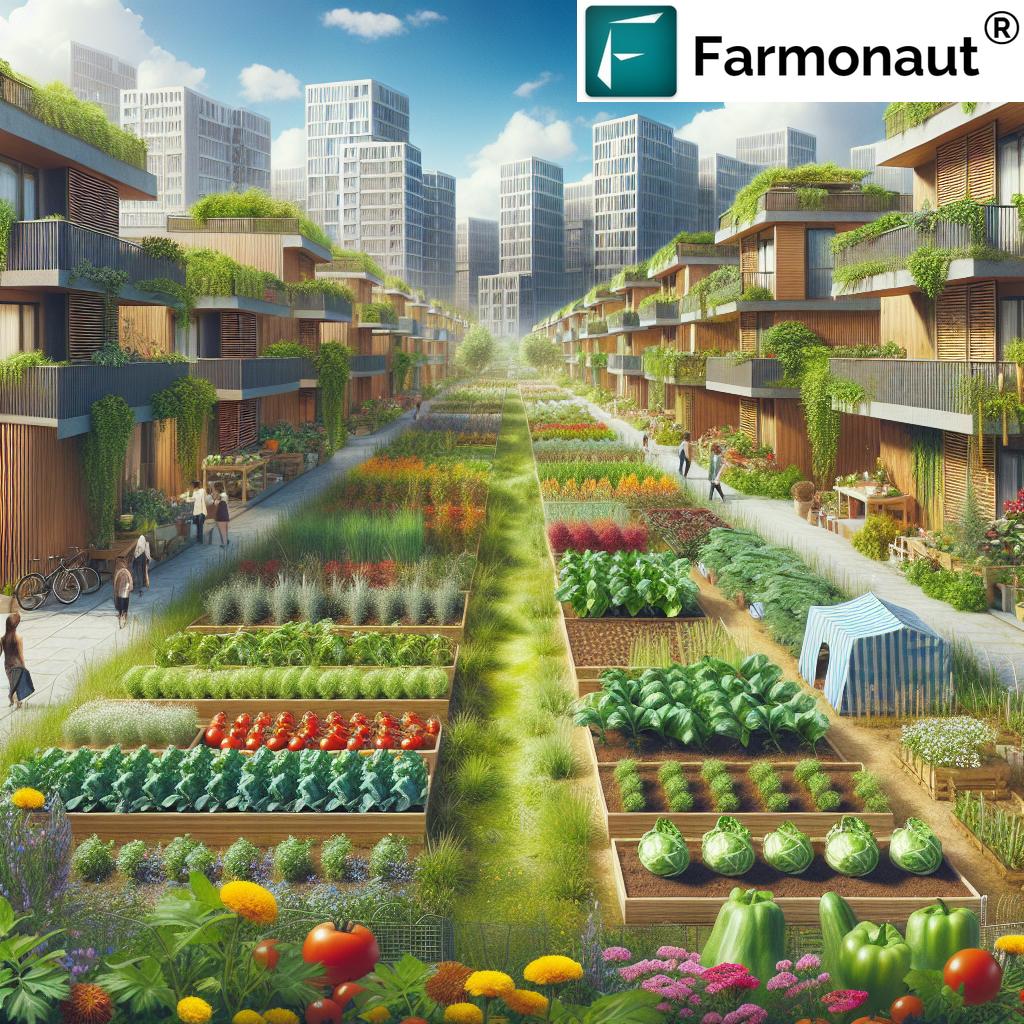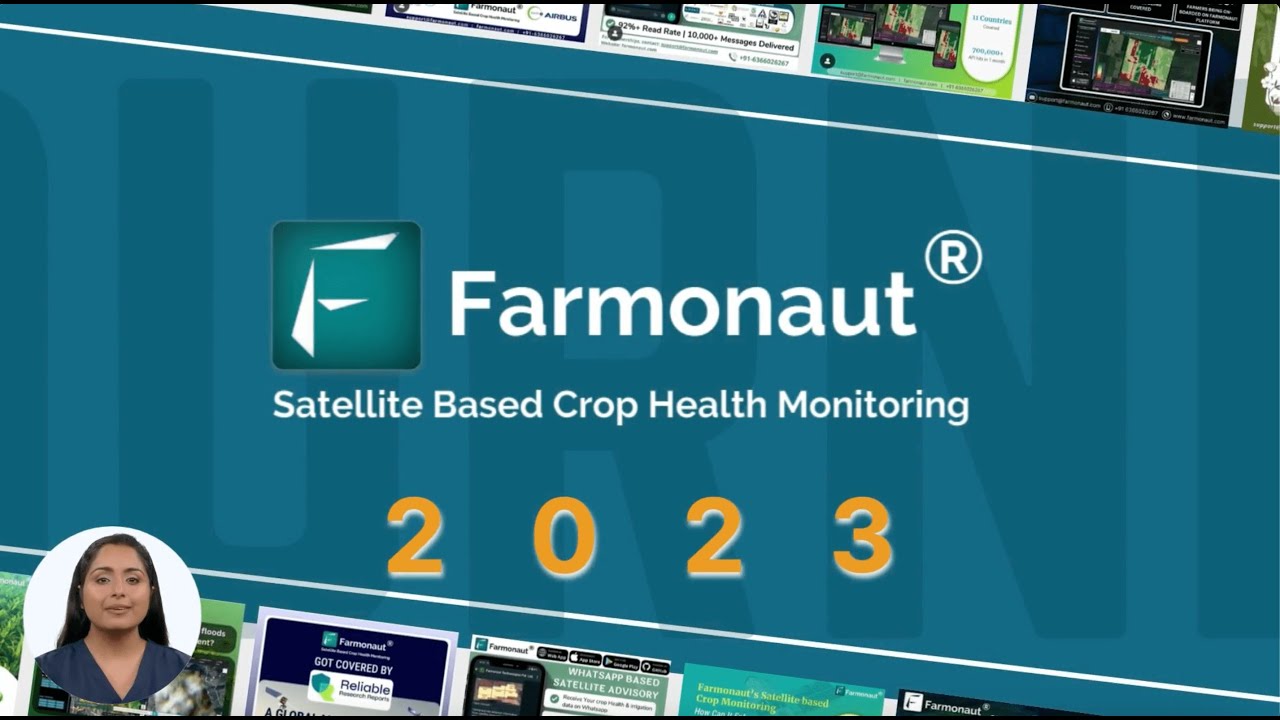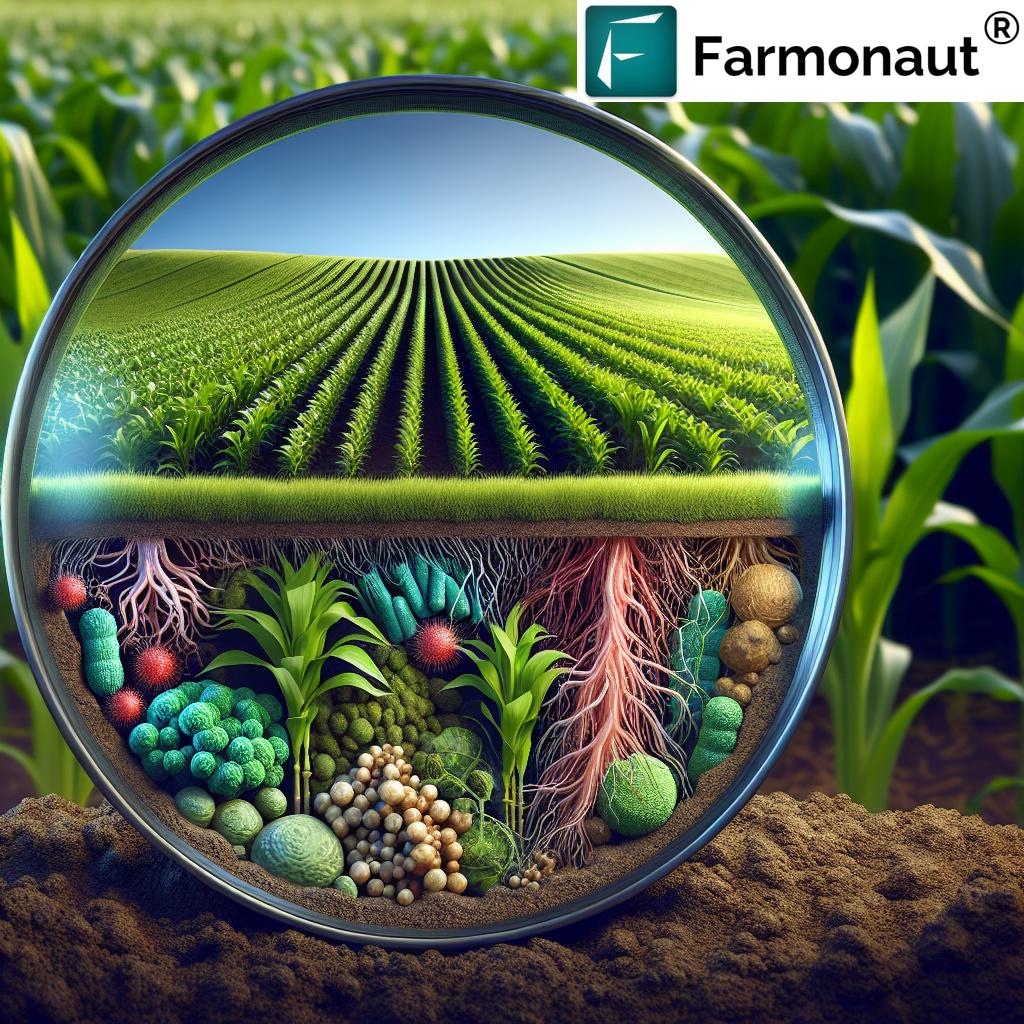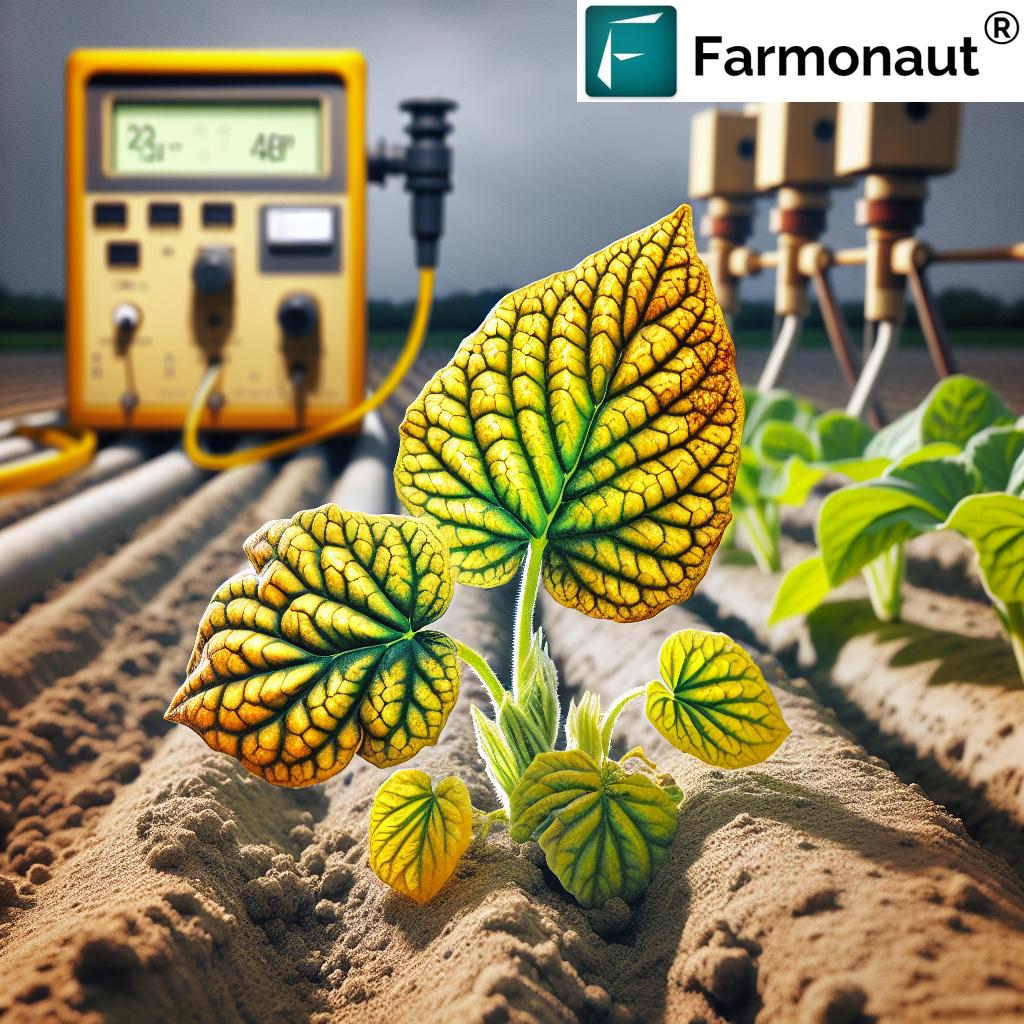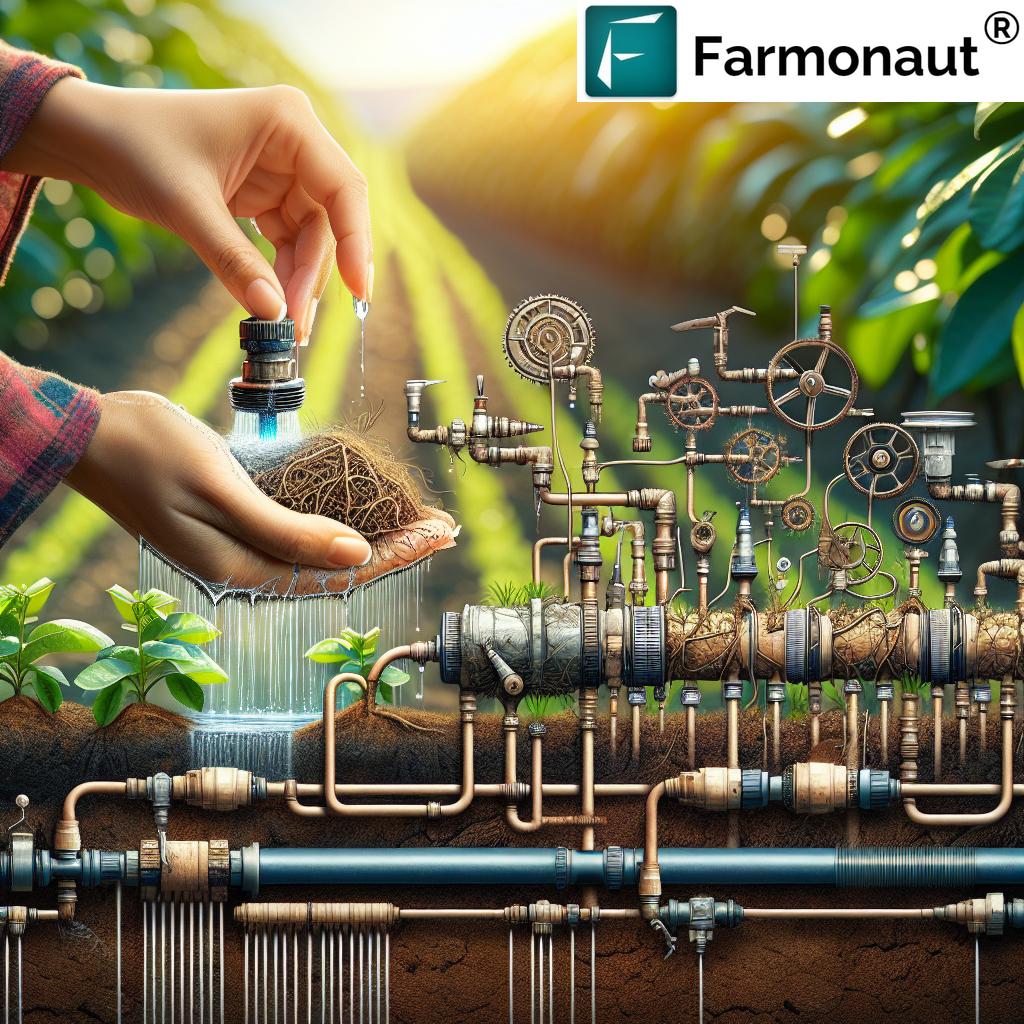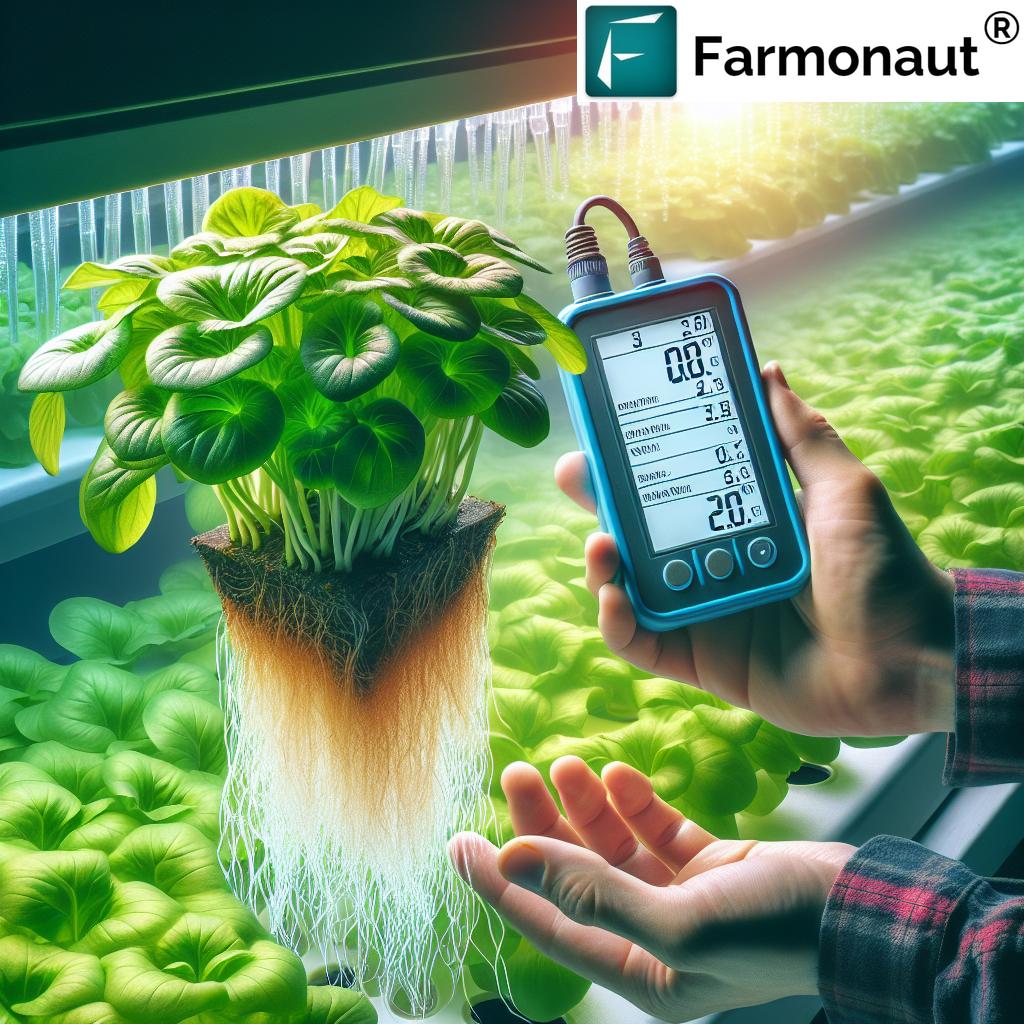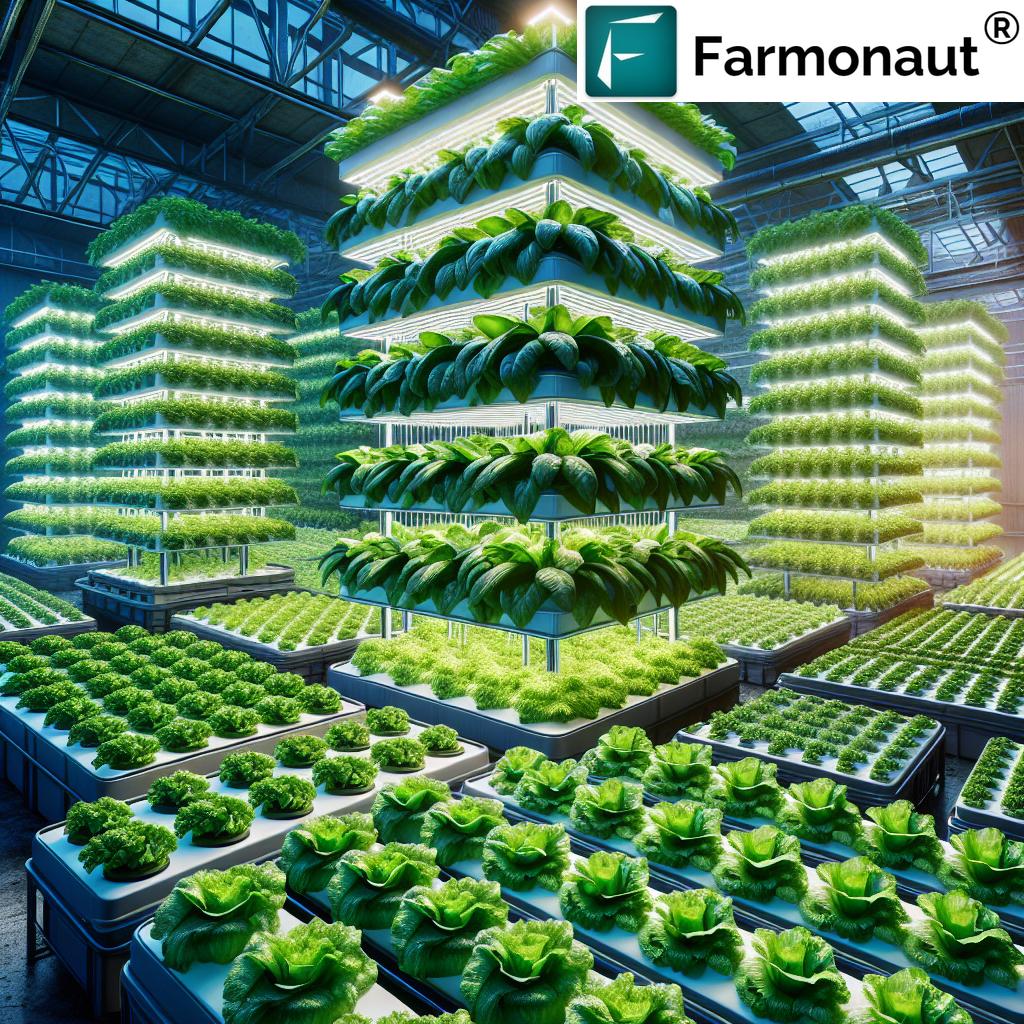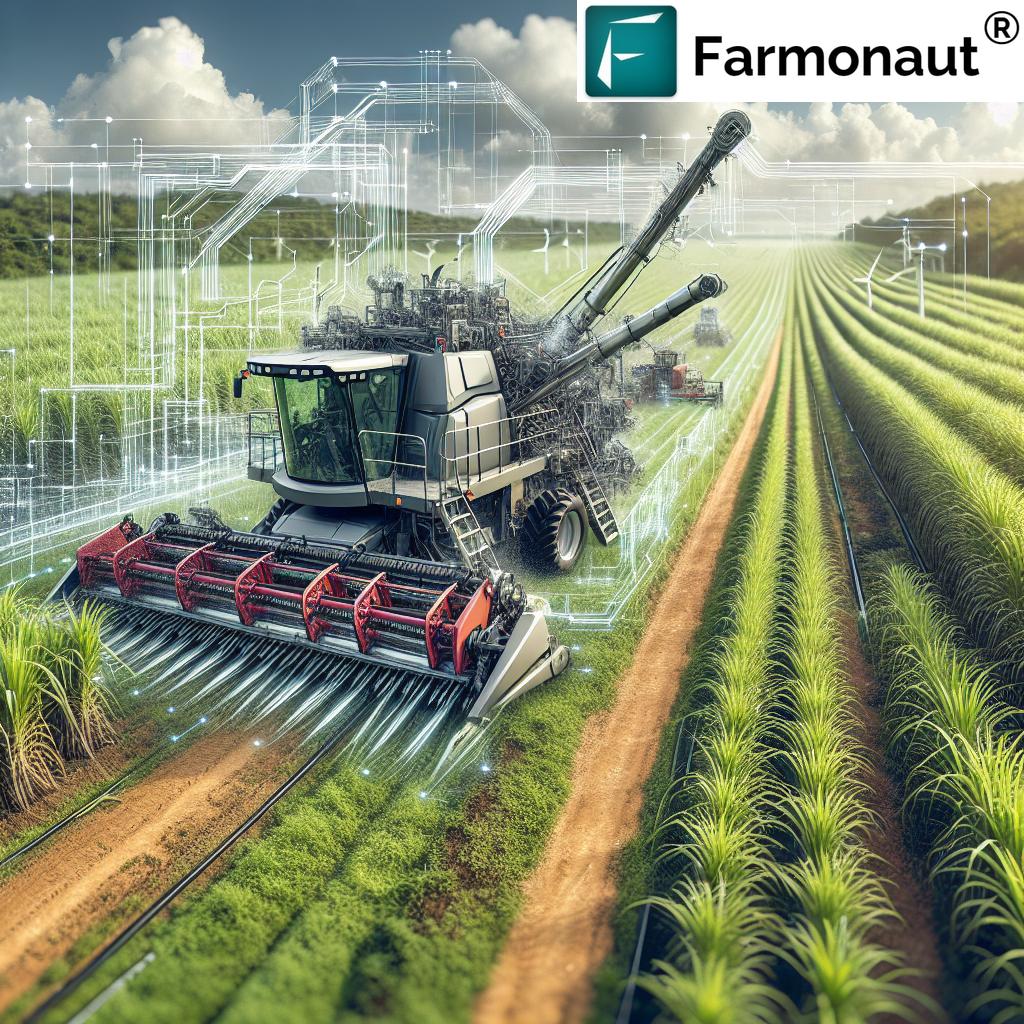Table of Contents
- Urban Farming: Revolutionizing City Sustainability
- Interesting Trivia: City Green Spaces and Food Supply
- Historical Context and Evolution of Urban Agriculture
- Urban Farming Practices: Methods Transforming Cities
- 7 Powerful Ways Urban Farming Boosts Sustainability
- How Farmonaut Empowers Urban Farming
- Comparison Table: Urban Farming Method & Sustainability Impact
- Overcoming Challenges in Urban Farming
- Integrating Urban Farming into City Planning & Policy
- Frequently Asked Questions
- Conclusion: The Urban Agriculture Future
Urban Farming: 7 Powerful Ways Cities Boost Sustainability
Urban farming, also known as urban agriculture, sits at the intersection of environmental sustainability, local food security, and community empowerment in today’s rapidly urbanizing world. As urban areas continue their relentless expansion, integrating agricultural activities into city spaces becomes not just an environmentally responsible choice, but a critical strategic necessity.
Through approaches like community gardens, rooftop farming, vertical farming, and urban agroforestry, we are cultivating, processing, and distributing fresh, local produce right within the urban fabric. These sustainable urban agriculture practices not only promote green spaces and biodiversity, but also play a vital role in enhancing food security in cities, reducing food miles, and fostering resilient local economies.
In this detailed post, we’ll explore the historical roots of urban agriculture, survey transformative modern urban farming initiatives, examine 7 powerful sustainability benefits, and offer a practical roadmap for integrating these ecological marvels into urban planning. We’ll also reveal how groundbreaking technologies like Farmonaut empower all stakeholders—from individual citizens to city planners—on the journey to greener, healthier, more self-reliant cities.
Historical Context and Evolution of Urban Agriculture
To fully appreciate the momentum behind urban farming, we must journey back to its roots. Throughout ancient civilizations, urban gardens and local farming supported burgeoning populations. The Hanging Gardens of Babylon, Roman villa kitchen gardens, and the intensive raised-bed systems of ancient Aztec cities all serve as early examples of cities integrating agricultural activities into their infrastructure. These approaches were not only about survival—they already provided environmental and social benefits to their citizens.
As we moved into the industrial age, food production shifted toward rural areas, separating city residents from the process of cultivating and processing food. Yet, each major crisis—be it war, famine, or economic downturn—saw urban agriculture revived. The “Victory Gardens” during the World Wars, for instance, enabled North American and European cities to supplement food through shared, local gardens.
Today, with global population growth and the urgent need for environmental and food system resilience, we are witnessing a new golden era of sustainable urban farming. From North America’s sprawling community gardens to Asia’s innovative vertical farms, cities worldwide are embracing both time-honored and trailblazing techniques.
Urban Farming Practices: Methods Transforming Cities
Our cities are now rich laboratories for adaptable, sustainable food systems. Let’s dive into the most impactful urban agricultural practices reshaping our landscapes, economies, and communities.
1. Community Gardens: Building Local Food and Togetherness
Community gardens are shared spaces where individuals, families, or groups collaboratively cultivate vegetables, fruits, and herbs. They animate unused lots, parks, and even former industrial sites, creating productive landscapes in the city’s heart. Beyond supplying fresh, local produce, these gardens support community engagement, cultural interaction, and neighborhood resilience.
- Typical Crops: Leafy greens, tomatoes, carrots, beans, herbs
- Benefits: Food security, social cohesion, green spaces, recreational opportunities
- Participation: Open to all, from seasoned gardeners to first-time urban farmers
2. Rooftop Farming: Utilizing the Urban Skyline
Rooftop farming transforms underused rooftops into thriving food-producing landscapes. In densely populated cities, where ground-level space is scarce, these farms yield impressive amounts of organic vegetables, herbs, and even marketable crops.
- Notable Examples: Brooklyn Grange (New York City) with 5.6 acres of organic rooftop farm; Lufa Farms (Montreal) operating high-tech commercial greenhouses atop Montreal buildings.
- Advantages: Maximizes space, insulates buildings (energy savings), absorbs rainwater, and beautifies the skyline.
- Common Crops: Leafy greens, peppers, tomatoes, microgreens, strawberries
3. Vertical Farming: Engineering Growth Upwards
With vertical farming, we grow crops in stacked layers or vertically inclined surfaces—sometimes in old factories, shipping containers, or modular indoor units. Using hydroponics, aeroponics, LED lighting, and climate control technology, vertical farms offer year-round, high-density crop production with minimal land, highly efficient water usage, and almost no need for local pesticides.
- Key Features: Stacked layers often within controlled environments, scalable for urban warehouses
- Common Output: Lettuce, herbs, microgreens, and certain fruits (strawberries, tomatoes)
- Benefits: Minimal water use, hyperlocal supply chains, significant reduction in food miles
4. Urban Agroforestry: Restoring Ecology in the City
Urban agroforestry integrates trees, shrubs, perennials, and crops, mimicking natural ecosystems but tailored for food production and biodiversity. Examples like the Festival Beach Food Forest in Austin, Texas, demonstrate how rewilding urban spaces via food forests supports species diversity, pollinator habitats, and community wellness.
- Key Species: Fruit and nut trees (figs, persimmons, pecans), edible shrubs (blueberries), pollinator plants
- Benefits: Biodiversity, microclimate regulation, carbon sequestration, recreational environments
5. Hydroponic & Aquaponic Systems: Soil-Free Urban Farming
These innovative practices allow urban gardeners to cultivate crops in nutrient-rich water, sometimes incorporating fish (aquaponics) whose waste fertilizes plants. Perfect for indoor spaces, these systems greatly reduce water use, require no arable land, and can be deployed in non-traditional environments.
- Key Crops: Leafy greens, tomatoes, herbs, cucumbers
- Environmental Benefits: Saves water, reduces pesticide use, maintains a closed-loop system of nutrients
6. Urban Greenhouse Farming: Controlled, Sustainable Yields
Urban greenhouses, such as those atop apartment complexes in Montreal or retrofitted onto city factories, provide a year-round growing environment using controlled humidity, temperature, and light. When powered by renewables and managed for resource efficiency, they are models of sustainable urban agriculture.
- Advantages: Consistent supply of fresh produce, resilience to climate extremes, less spoilage
- Common Vegetables: Peppers, tomatoes, leafy greens, cucumbers
7. Permaculture & Edible Landscaping: Regenerative Urban Practices
Permaculture methods focus on designing self-sustaining, regenerative systems. In the urban context, it often means incorporating edible landscaping—using fruit trees, berry bushes, and perennial herbs in parks and public gardens—to boost both food supply and biodiversity while minimizing ongoing labor and input requirements.
- Key Features: Edible plantings, rain gardens, pollinator zones, composting systems
- Sustainability Profile: Highly resilient, minimal maintenance, ecosystem enhancement
7 Powerful Ways Urban Farming Boosts Sustainability
Urban farming is a remarkable engine for city-wide transformation. Let’s explore seven critical ways these methods drive sustainability, resilience, and well-being in urban environments:
1. Enhancing Food Security in Cities
By producing food locally, urban agriculture reduces reliance on distant farms and long supply chains. When cities develop their own productive landscapes, they minimize disruptions due to transport strikes, price hikes, or climate-related disasters. Local food is also fresher, more nutritious, and often more affordable. In fact, some city community gardens can contribute up to 15% of a city’s fresh food supply, directly supporting food security.
2. Improving Environmental Sustainability in Urban Areas
- Mitigating Urban Heat Islands: Green roofs and gardens absorb heat, lowering city temperatures and reducing the need for air conditioning.
- Promoting Biodiversity: Diverse plantings offer habitats for bees, butterflies, and birds, enhancing ecosystem resilience.
- Stormwater Management: Vegetated urban spaces slow runoff, reduce flooding, and filter pollutants.
- Air Quality: Urban farms act as “lungs,” filtering particulate matter and producing oxygen.
3. Reducing the City’s Carbon Footprint
Shorter supply chains (fewer “food miles”) translate to less transportation-related emissions. By growing and consuming food locally, we reduce fuel usage and packaging waste, bringing down the carbon intensity of our diets. Urban farms using efficient technologies—like solar-powered greenhouses or vertical farms with LED lighting—can push this advantage even further.
Farmonaut offers a dedicated carbon footprinting platform for urban farms and agribusinesses. Leverage carbon tracking to assess and improve your environmental impact.
4. Stimulating the Local Economy & Job Creation
- Job Opportunities: New roles in farming, greenhouse management, agro-marketing, and tech support.
- Entrepreneurship: Urban farmers develop markets for locally grown, specialty produce (microgreens, mushrooms, edible flowers).
- Indirect Impact: Stimulates demand for composting, soil testing, and logistics solutions.
Urban farming projects can also enhance property values and attract new businesses and investments to neighborhoods.
5. Fostering Community Engagement and Cohesion
Community gardens and shared farms are much more than food-production spaces—they serve as social hubs for people to connect, share knowledge, celebrate diverse food cultures, and participate in local events. These interactions foster trust, mutual support, and social resilience in urban environments.
6. Efficient Use of Underutilized Urban Spaces
Repurposing vacant lots, abandoned industrial areas, rooftops, and parking structures for agriculture transforms them from liabilities into assets. These new productive landscapes add value, create jobs, and turn unsightly or polluted sites into green, thriving nodes of life and commerce.
Farmonaut’s AI-based crop management systems can help identify and monitor suitable underutilized urban plots for successful conversion into green spaces, ensuring continuous productivity and environmental safety.
7. Supporting Sustainable Resource Management
- Water Conservation: Hydroponics, drip irrigation, and rainwater harvesting optimize scarce urban water supplies.
- Waste Reduction: Composting urban organic waste produces soil amendments—reducing landfill burden.
- Intelligent Inputs: Tech-driven monitoring minimizes unnecessary fertilizer and pesticide use.
Farmonaut enables urban farmers with resource management tools for large-scale and shared farm landscapes, maximizing productivity while minimizing environmental impact.
How Farmonaut Empowers Urban Farming
Technology acts as a catalyst, enabling us to scale and sustain urban agriculture in even the most challenging city environments. Farmonaut stands at the front of this wave, delivering affordable, data-driven precision agriculture tailored for everyone—from individual gardeners to large urban farms and municipal planners.
- Real-Time Satellite Crop Health Monitoring: Farmonaut uses multispectral imagery to identify crop stress, soil moisture issues, and vegetation health in community gardens, rooftop farms, and vertical setups. This allows urban farmers to act quickly to optimize growth and reduce resource waste.
- AI-Based Advisory Systems (Jeevn AI): Receive instant, personalized insights on irrigation, fertilizer application, weather, and pest risks—maximizing yield in limited or challenging city spaces.
- Blockchain-Based Traceability: Urban agriculture is seeing rising demand for farm-to-table and organic products. Farmonaut’s traceability solution ensures transparency, food safety, and consumer trust by tracking every step from urban plot to market.
- Resource and Fleet Management: For municipal or larger urban agri-projects, Farmonaut streamlines logistics with fleet management tools that optimize vehicle usage and track resource flows for efficiency, saving costs and reducing the carbon footprint.
- Crop Loan & Insurance Services: Satellite-based verification via Farmonaut’s crop loan and insurance portal increases access to financial support for smallholder urban farmers while minimizing fraud for banks and insurers.
Farmonaut’s flexible, subscription-based platform (see transparent pricing below) is designed to scale with city farms’ evolving needs. Its API and developer documentation allow seamless integration of urban farming data into bespoke apps or city dashboards—fueling smarter, data-driven decisions for sustainable urban agriculture initiatives.
Comparison Table of Urban Farming Initiatives and Their Sustainability Benefits
| Urban Farming Method | Environmental Benefit | Estimated Increase in Biodiversity (%) | Estimated Food Production (kg/year/1000 sq ft) | Reduction in Food Miles (%) | Real-world Example (City or Project) |
|---|---|---|---|---|---|
| Rooftop Gardens/Farms | Cools buildings, increases green space, reduces stormwater runoff | 25–32% | 80–200 | 95–98% | Brooklyn Grange (New York City) |
| Community Gardens | Enhances soil quality, public recreation, neighborhood food access | 18–25% | 100–180 | 90–95% | Various, supported by city planning initiatives |
| Vertical Farming | Maximizes space efficiency, uses less water, no pesticides | 12–20% | 150–250 | 95–99% | Warehouse Farms, Singapore; Lufa Farms (Montreal) |
| Hydroponics | Saves water, highly productive, adaptable indoors | 10–15% | 120–240 | 95–97% | Portable container farms, modular urban projects |
| Urban Agroforestry/Food Forests | Boosts biodiversity, carbon sequestration, climate regulation | 30–40% | 70–120 | 90–95% | Festival Beach Food Forest (Austin, TX) |
| Permaculture/Edible Landscaping | Self-sustaining systems, soil regeneration, habitat creation | 20–28% | 60–110 | 88–92% | Urban edible park projects, local permaculture guilds |
| Urban Greenhouse Farming | Year-round production, protects crops from climate extremes | 15–22% | 130–230 | 93–96% | Lufa Farms (Montreal) |
Overcoming Challenges in Urban Farming
While urban farming offers myriad benefits, practitioners and city leaders need to be mindful of certain challenges. Let’s discuss the obstacles and real-world solutions for resilient, safe, and successful urban farms:
Zoning and Regulatory Frameworks
City zoning rules may historically restrict agricultural activities in urban areas. Advocacy across North America, Europe, and Asia is yielding progress, with cities like Chicago leading the way by amending zoning codes to permit urban farms, community gardens, and even the retail of surplus produce (more here).
- Solution: Engage policymakers and residents to update zoning codes and support urban farming initiatives with clear, equitable guidelines.
- Tip: Explore city resources for grants, pilot programs, and land access opportunities dedicated to urban agriculture.
Resource Constraints (Land, Water, Capital)
Urban plots are often small, costly, or contaminated, and water can be in short supply. Many city farmers also face barriers to startup financing.
- Solution: Hydroponic, aquaponic, and vertical farming reduce land/water requirements; rooftop agriculture optimizes existing infrastructure. Farmonaut’s data-driven resource management can maximize output in even the tightest city spaces.
- Financing: Technologies like Farmonaut’s crop loan & insurance verification open up microfinancing and safety nets for new urban growers.
Soil Contamination and Food Safety
Many urban soils are affected by residual heavy metals, hydrocarbons, or other pollutants. It is vital to test and remediate soils before cultivating vegetables, fruits, or herbs for human consumption.
- Solution: Utilize raised beds with imported clean soil, deploy in-soil filtration (biochar), or opt for soilless systems in contaminated plots.
- Ongoing Monitoring: Farmonaut’s satellite data can help track vegetation health and “flag” underperforming plots for investigation, enhancing food safety protocols at scale.
Social and Maintenance Challenges
Community engagement and sustained stewardship of shared gardens may be difficult, particularly in transient neighborhoods.
- Solution: Dedicated training and educational sessions, clear stewardship/participation models, and involving local institutions (schools, associations, clinics) for continuity.
- Tip: Gamifying participation or recognizing “neighborhood champions” supports continuity.
Integrating Urban Farming into Urban Planning & Policy
The next frontier for sustainable urban development is intentional and strategic integration of agriculture right into the city’s planning DNA. Here are steps cities and stakeholders can take for seamless, impactful results:
1. Policy Support: Urban Agriculture Policy, Zoning & Incentives
- Adopt Forward-Thinking Zoning: Encourage mixed-use zoning, tax incentives, and streamlined path-to-market for locally grown produce.
- Regulatory Support: Establish special “agriculture overlay districts” where farming is prioritized and incentivized.
- Financial Incentives: Provide grants, subsidized land, or technical support for innovative urban farming practices.
Did You Know? Some cities are beginning to recognize food production as essential green infrastructure in new developments—paving the way for mandatory inclusion in urban revitalization projects.
2. Community Engagement and Participatory Planning
- Co-Design Initiatives: Let residents, schools, churches, and local businesses co-create gardens and farming spaces to boost long-term engagement.
- Public Education: Organize farm open days, harvesting events, and gardening workshops to enhance skills and build pride in local production.
- Leverage Social Media: Use local networks/apps for coordination, sharing, and celebrating urban farming successes and best practices.
3. Education & Training: Building Urban Farmer Capacity
- School Partnerships: Include urban gardening and sustainability science in curricula.
- Adult Classes: Offer workshops on everything from vertical farming techniques to composting and DIY hydroponics.
- Support Networks: City governments, local nonprofits, and agri-tech companies like Farmonaut can empower urban gardeners with remote advisory, online tutorials, and real-time crop health monitoring—democratizing advanced tech for all skill levels.
Ready to embrace data-driven urban farming? Try Farmonaut’s platform for precision urban agriculture and unlock real-time insights for your city, neighborhood, or even your own rooftop!
Frequently Asked Questions About Urban Farming & Sustainability
What is urban farming, and how does it differ from traditional agriculture?
Urban farming, or urban agriculture, refers to growing, processing, and distributing food within or around cities, using innovative methods like rooftop gardens, vertical farms, and community gardens. Unlike traditional rural farming, it adapts to limited urban spaces and directly serves city residents.
How does urban farming promote sustainability?
Urban farming boosts sustainability by reducing food miles, cutting carbon emissions, recycling urban waste (composting), enhancing green spaces, and supporting biodiversity with diverse, native plantings.
Is urban farming profitable?
Urban agriculture can be economically rewarding, especially when using high-value crops, niche markets (microgreens, organic produce), or innovative approaches (vertical, hydroponic systems). It also generates jobs and entrepreneurial opportunities in city settings.
Can urban farming solve food security problems in cities?
While urban farming alone may not completely substitute rural food sources, it significantly enhances food security by providing fresh, nutritious produce locally, especially in food-insecure or underserved areas.
What technologies make urban farming more efficient?
Satellite crop monitoring, AI-driven advisories, hydroponics, solar-powered greenhouses, smart irrigation, and blockchain-based traceability improve output, safety, and sustainability in urban agriculture.
What support does Farmonaut provide to urban farmers?
Farmonaut offers precision agriculture through real-time satellite crop monitoring, AI-based decision support, blockchain traceability, carbon footprinting, resource management, and digital logistics—enabling city farmers and planners to run productive, sustainable farms at any scale.
Is it safe to grow food in the city given soil contamination risks?
Yes, if growers test soil, use raised beds with clean soil, or implement hydroponic/soilless systems. Technologies like Farmonaut’s platform help monitor crop health and identify issues early.
Conclusion: The Urban Agriculture Future—Empowered by Innovation
Urban farming stands at the heart of resilient, sustainable cities. By expertly integrating community gardens, rooftop agriculture, vertical farming, and tech-driven management, we create healthier, greener environments—where every underutilized patch can be transformed into a productive, community-serving landscape.
Through expert resource management, digital precision platforms like Farmonaut, and truly inclusive planning, cities worldwide are building a vibrant web of local food systems that nourish both people and planet.
Let’s keep advocating, innovating, and growing—one rooftop, community plot, and smart farm at a time.
For custom integrations and access to the full Farmonaut data suite, check out our API portal and API Developer Docs for agricultural technology.







